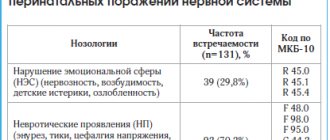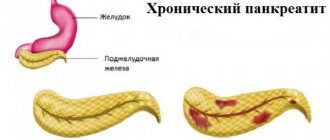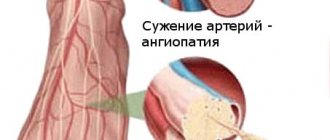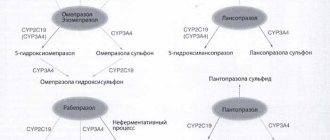Polyneuropathy, or peripheral neuropathy, occurs as a result of damage to the peripheral nerves and often results in symptoms such as weakness, numbness and pain, usually in the arms and legs. But polyneuropathy can also affect other areas of the body. Peripheral neuropathy may develop in one nerve (mononeuropathy), two or more nerves in different areas, or may involve many nerves (polyneuropathy).
The peripheral nervous system transmits information from the brain and spinal cord (central nervous system) to the rest of the body. Peripheral neuropathy can result from traumatic injuries, infections, metabolic disorders, hereditary causes, and exposure to toxins. One of the most common causes of polyneuropathy is diabetes mellitus.
Patients with peripheral neuropathy typically describe pain as a tingling or burning sensation. In many cases, symptoms decrease if compensation occurs for the underlying disease.
Each nerve in the peripheral nervous system has a specific function, so symptoms depend on the type of nerve that is damaged. Nerves are divided into:
- Sensory nerves that receive sensations from the skin, such as temperature, pain, vibration, or pressure
- Motor (motor) nerves that control muscle movement
- Autonomic nerves that control functions such as blood pressure, heart rate, digestion, and bladder function
Information about polyneuropathy
The word "polyneuropathy" is translated from Greek as "damage to many nerves." This term very accurately describes the essence of the pathology. All structures of the body are entangled in a network of thin nerve fibers, which are divided into three groups:
- motor: responsible for motor functions;
- sensory: provide tissue sensitivity;
- Autonomous (vegetative): necessary for the unconscious regulation of the activity of certain structures, for example, blood vessels or internal organs.
Damage to certain fibers inevitably leads to disruption of their functions. The most common is mixed polyneuropathy of the lower extremities, in which symptoms of dysfunction of the sensory and motor nerves appear.
Make an appointment
To diagnose and clarify the causes, laboratory tests are carried out:
- clinical and biochemical blood test;
- the level of B vitamins and blood homocysteine are determined: the presence of antibodies to the most common infections is determined - HIV, syphilis, hepatitis B and C, etc. according to indications);
- if there is reason to suspect a hereditary cause of the disease, a complex of genetic studies is carried out;
- the protein composition of blood serum is determined using freelite immunofixation;
- A cerebrospinal fluid analysis is performed.
Causes
Damage to peripheral nerves can occur due to the following conditions:
- diabetes mellitus: the most common cause of polyneuropathy, resulting from metabolic disorders in the myelin sheath of nerve fibers; mainly the lower extremities are affected;
- severe and prolonged deficiency of B vitamins necessary for the full functioning of the nervous system;
- infectious diseases: HIV, tick-borne borelliosis, leprosy;
- renal failure;
- alcohol abuse;
- acute and chronic intoxication, including drugs;
- autoimmune diseases: damage occurs against the background of a malfunction of the immune system; the most common are chronic and acute inflammatory polyneuropathy (Guillain-Barré syndrome);
- long stay in intensive care, for example, with extensive injuries or serious illness;
- exposure to ionizing radiation;
- pregnancy: carrying a child can cause vitamin deficiency and autoimmune lesions.
In addition, there are hereditary forms of the disease, transmitted from relatives, as well as idiopathic polyneuropathy, the cause of which cannot be determined.
Polyneuropathy (PNP)
Polyneuropathy (PN) (patient information) Polyneuropathy is one of the most common diseases of the peripheral nervous system.
What is polyneuropathy? Polyneuropathies are a group of diseases characterized by multiple and diffuse damage to roots, plexuses and peripheral nerves.
What symptoms bother a patient with polyneuropathy? Depending on which nerve fibers are more involved in the pathological process, the following complaints arise:
- sensitive symptoms: the patient is bothered by numbness, tingling, burning, “crawling” in the hands and/or feet; unsteadiness when walking, aggravated in the dark and when closing the eyes;
- motor symptoms: clumsiness, weakness in the hands and/or feet develops; weight loss in the muscles of the arms and legs; impaired fine motor skills (difficulty fastening buttons and zippers, tying shoelaces, etc.); difficulty walking (“spanking” feet, difficulty getting up and down stairs, etc.);
- vegetative symptoms: fluctuations in blood pressure, “interruptions” in the heart, constipation or diarrhea, dry skin or increased sweating, decreased libido, erectile dysfunction.
With polyneuropathy, either an isolated lesion of a certain type of nerve fiber or a combination of them can occur, which leads to the appearance of a varied clinical picture.
How does polyneuropathy develop? According to the speed of development, they are distinguished:
- acute polyneuropathies (development < 4 weeks): the most common cause is Guillain-Barré syndrome;
- subacute polyneuropathy (development within 4-8 weeks);
- chronic polyneuropathies (development over > 8 weeks): common causes are diabetes mellitus, alcohol abuse, lack of B vitamins, chronic inflammatory demyelinating polyneuropathy, hereditary causes, etc.
What are the causes of the development of polyneuropathy? The most common causes of polyneuropathy in developed countries are diabetes and alcohol abuse. Other possible reasons may be:
- dieting, poor nutrition, vegetarianism, leading to the development of vitamin B12 deficiency;
- chemotherapy, the use of neurotoxic drugs, less often - intoxication with heavy metals, etc.;
- autoimmune damage to peripheral nerves with the development of dysimmune neuropathies (Guillain-Barré syndrome, chronic inflammatory demyelinating polyneuropathy, paraproteinemic polyneuropathy, multifocal motor neuropathy, etc.);
- chronic somatic diseases: systemic autoimmune connective tissue diseases (systemic lupus erythematosus, rheumatoid arthritis, Sjogren's disease, etc.), chronic renal or liver failure, thyroid pathology, etc.;
- infectious diseases (Lyme borreliosis, HIV infection, neurosyphilis);
- oncological diseases with the development of paraneoplastic process;
- hereditary neuropathies (hereditary motor-sensory neuropathies, hereditary neuropathy with a tendency to paralysis from compression, transthyretin familial amyloid polyneuropathy, porphyritic polyneuropathy, etc.).
It is important to clarify the cause of polyneuropathy as early as possible, because The prognosis and treatment tactics depend on this!!!
What diagnostic methods can be used to detect polyneuropathy? An examination of a patient with polyneuropathy begins with a consultation with a neurologist, during which the doctor analyzes complaints and anamnestic information and assesses the neurological status. If there are subjective and objective symptoms indicating the presence of polyneuropathy, the doctor prescribes an examination:
- Electroneuromyography (ENMG) is the main instrumental method for diagnosing diseases of peripheral nerves, which not only confirms the fact of nerve damage, but also determines the nature of their damage (demyelinating, axonal, with conduction blocks).
In complex diagnostic cases, the doctor may recommend ultrasound of peripheral nerves, MRI of the plexuses with contrast, diagnostic lumbar puncture, morphological examination of the nerve (biopsy).
What diagnostic methods can be used to clarify the cause of polyneuropathy? To clarify the reasons that caused widespread damage to peripheral nerves, a thorough examination is necessary:
- comprehensive laboratory blood test: minimum volume - detailed general and biochemical blood test, RW, anti-HIV, HBsAg and anti-HCV, level of vitamins B1, B6, B9, B12, homocysteine (if necessary, in each case individually, spectrum of laboratory examination is expanding)
- if hereditary neuropathy is suspected - molecular genetic analysis (search for mutations in the PMP22 gene, neuromuscular disease panel or full genomic sequencing), etc.;
- electrophoresis of serum and urine proteins with immunofixation + freelite;
- lumbar puncture with general analysis of cerebrospinal fluid;
- instrumental general somatic examination, including cancer screening (CT of the lungs, ultrasound of the mammary glands, mammography, ultrasound of the prostate and scrotum, endoscopy, colonoscopy, ultrasound of the abdominal and pelvic organs, PET-CT, etc.).
The examination plan is drawn up individually! It is important to remember that in every third case, after a thorough examination, it is not possible to clarify the cause of polyneuropathy - in this case, idiopathic polyneuropathy is diagnosed!!!
What treatment methods have been developed for polyneuropathy? From the standpoint of evidence-based medicine, pathogenetic treatment has not been developed for all polyneuropathies. Thus, with diabetic polyneuropathy, first of all, careful monitoring of blood glucose levels and compliance with all recommendations of the treating endocrinologist is necessary. For toxic polyneuropathy, such as alcoholic polyneuropathy, treatment begins with complete cessation of the bad habit. If deficiency polyneuropathy is detected, vitamin therapy is carried out, and the causes causing the development of the disease are eliminated.
Pathogenetic therapy (i.e. therapy aimed at correcting the mechanisms of disease development) is the main one in the treatment of dysimmune polyneuropathy (Guillain-Barré syndrome, chronic inflammatory demyelinating polyneuropathy, paraproteinemic polyneuropathy, multifocal motor neuropathy, etc.). Depending on the type of dysimmune neuropathy, the optimal treatment method or their combination is selected individually, taking into account all the nuances of the disease. The following methods of pathogenetic therapy for dysimmune neuropathies have been developed: hormone therapy (use of high doses of glucocorticosteroid drugs), high-volume plasmapheresis, high-dose intravenous immunotherapy, as well as the use of cytostatics and monoclonal antibody preparations.
Currently, pathogenetic therapy has been developed for some hereditary polyneuropathies:
- Transthyretin familial amyloid polyneuropathy (TTR-FAP) – liver transplantation, stabilization of the transthyretin molecule;
- Fabry disease – enzyme replacement therapy;
- Porphyritic polyneuropathy - heme arginate.
- Refsum's disease - diet therapy, plasmapheresis.
Symptomatic therapy is used to eliminate unpleasant sensory sensations (numbness, burning, burning pain) in polyneuropathy. Local anesthetics, anticonvulsants, antidepressants, opioid analgesics, and psychotherapy are recommended.
Restorative and rehabilitation methods of treatment (transcutaneous electrical neurostimulation, acupuncture, biofeedback, interventional methods, massage, physiotherapy, balance therapy, robotic therapy) occupy an important place in the correction of neurological disorders in polyneuropathy.
If you have symptoms of polyneuropathy or have been diagnosed with polyneuropathy, you can undergo a comprehensive examination at the Center for Diseases of the Peripheral Nervous System of the Federal State Budgetary Institution National Center of Neurology, where they will help you clarify the diagnosis, identify the causes of damage to the peripheral nerves and prescribe therapy based on evidence-based medicine.
This area has long been one of the priorities for the Federal State Budgetary Institution Scientific Center for Science and Technology. Here, the country's first neuroreanimation department was created, which was famous for its unique methodology of caring for patients with severe forms of polyneuropathy requiring long-term artificial ventilation. Several decades ago, unique work was carried out on the diagnosis and treatment of certain forms of neuropathies: hereditary, diphtheria, dysimmune, etc. Here, for the first time in the USSR, plasmapheresis was introduced as a method of treating autoimmune diseases of the nervous system. We have accumulated unique domestic experience in the treatment and rehabilitation of patients with Guillain-Barre syndrome, severe forms of CIDP and neuropathies of other origins. The center for diseases of the peripheral nervous system includes 13 specialists, including 10 neurologists and 3 endocrinologists. All neurologists are proficient in ENMG research techniques.
Employees of the Center for Peripheral Nervous System Diseases provide consultations to patients on an outpatient basis within the framework of compulsory medical insurance and on a commercial basis.
MAKE AN APPOINTMENT AND ENMG/iEMG BY MULTI-CHANNEL PHONE +7 +7
Kinds
Polyneuropathy is divided into several types depending on the type of fibers affected:
- sensory: the nerves that provide sensitivity are affected;
- motor: disturbances in the functioning of motor nerves are detected;
- motor-sensory: mixed form, in which motor disorders predominate;
- sensory-motor: mixed neuropathy, in which sensitivity disturbances are more pronounced;
- vegetative: first place comes to disturbances in the functioning of internal organs, changes in vascular tone and associated trophic disorders.
Significant differences in symptoms are noticeable only in the initial stages of the disease. Subsequently, all nerve fibers are involved in the pathological process, and the manifestations become mixed.
There are other types of classification of the disease:
- depending on the cause: alcoholic, diabetic, idiopathic, etc.;
- depending on the location of the lesion: polyneuropathy of the upper or lower extremities;
- depending on the type of course: acute, subacute, chronic;
- depending on the mechanism of occurrence: demyelinating (the sheath covering the nerve fibers is destroyed), axonal (formed by the death of nerve processes - axons), axonal-demyelinating.
Treatment
Treatment of polyneuropathy includes the maximum possible elimination of the cause that led to its development.
- So, if there is diabetic polyneuropathy, then it is necessary to strictly and constantly monitor blood sugar and be under the supervision of an endocrinologist in order to prevent decompensation of the underlying disease.
- If polyneuropathy has developed due to alcoholism, you must completely stop drinking alcohol. It is necessary to adjust your diet and treat with vitamins if a deficiency has developed.
- Treatment of polyneuropathies, which are based on autoimmune processes, is called pathogenetic therapy. At the same time, treatment is also individualized and selected depending on the type of disease, taking into account all the nuances of the disease mechanism and the individual characteristics of the patient. This includes treatment with high doses of glucocorticoid hormones, the use of cytostatics and monoclonal antibody drugs in the treatment, high-dose intravenous immunotherapy with human class G immunoglobulin drugs and high-volume programmed plasmapheresis.
Symptoms
Symptoms of polyneuropathy depend on its cause and the characteristics of the damage to the fibers. The most common signs of pathology include:
- decreased sensitivity of the feet and palms, leading to the subjective sensation of wearing socks or gloves;
- pain in the affected limbs (sharp or dull, short-term or nagging, usually worse at rest and at night);
- spasms and twitching of muscle fibers;
- pain when touching the skin or pressing on the affected limb;
- decreased reflexes;
- increased sweating of the extremities;
- trophic disorders: swelling, changes in skin color and dryness, trophic ulcers;
- weakness of the muscles of the arms and legs, slight tremors;
- paresthesia: pathological sensations of crawling, burning, coldness;
- muscle atrophy;
- restless legs syndrome.
Alcoholic polyneuropathy
This form of the disease most often affects the lower extremities. It develops with prolonged uncontrolled consumption of alcoholic beverages and manifests itself primarily as a burning sensation and tingling sensation in the legs. With the further development of the pathology, the patient begins to feel numbness and muscle cramps, which develop due to the concomitant lack of B vitamins.
Diabetic polyneuropathy
Elevated sugar levels cause damage to the nerves of the feet (distal version) and the upper legs (proximal version). In the first case, a person experiences a characteristic set of symptoms:
- numbness and decreased pain sensitivity;
- periodic burning pain;
- muscle weakness;
- decreased reflexes;
- impaired coordination of movements, manifested by unsteadiness of gait.
The combination of polyneuropathy with damage to small vessels leads to the appearance of trophic ulcers in the lower part of the leg. The proximal version of the lesion is characterized by sharp pain in the buttock and upper thigh, as well as gradual muscle atrophy in this area.
Symptoms of polyneuropathy
The reason for contacting a neurologist is causeless pain or a feeling of discomfort. Symptoms of neuropathy depend on the type of disease, whether the inner part of the nerve or just its sheath is involved in the pathological process.
The following symptoms should alert you:
- sudden tingling or burning sensation;
- muscle weakness;
- disturbance of temperature sensations;
- inability to perform certain movements of the limbs;
- gait disturbances;
- visible muscle atrophy, body asymmetry.
Sometimes pathological hypersensitivity appears when a slight touch of a certain part of the body causes severe pain, but with significant impact there is no sensation. Pain sensitivity may completely disappear, so, for example, a minor injury or cut will not be noticed. But due to a violation of innervation, such a wound takes a long time to heal and often turns into a trophic ulcer.
In advanced cases, autonomic disorders appear, blood pressure may increase or decrease, the functioning of the digestive tract changes, the blood supply to the skin deteriorates, it looks pale, dry and atrophic.
Often a person gets used to these sensations and because of this postpones a visit to the doctor. This increases the risk of progression of the disease that causes pathology of the nervous system. Meanwhile, the body's protective resources are depleted. With neuropathy, a painless myocardial infarction can occur, since due to damage to the sensory nerves the person will not feel pain.
Early diagnosis of these conditions can be done using the Medmarvel diagnostic complex, which is installed in medical offices 36.6. Within 10 minutes you will be able to find out if you have early, initial, not yet pathological, manifestations of neuropathy.
Diagnostics
Diagnosis of polyneuropathy requires a comprehensive examination, which includes:
- survey: identifying patient complaints, clarifying the time and circumstances of the occurrence of each symptom;
- taking an anamnesis: recording all past diseases, injuries, intoxications, chronic pathologies, hereditary risk factors, etc.;
- neurological examination: assessment of skin and proprioceptive (spatial) sensitivity, motor function, muscle strength, quality of reflexes;
- consultations with specialized specialists: endocrinologist, narcologist, toxicologist, nephrologist, etc.;
- general urine test, general blood test, blood biochemistry (determination of glucose levels, lipid spectrum, vitamins and microelements, kidney function indicators and other parameters);
- blood test for HIV and other infections;
- genetic and immunological studies according to indications;
- Electroneuromyography allows you to identify lesions of nerve fibers and exclude other diseases with similar symptoms;
- biopsy of nerve and muscle tissue;
- lumbar puncture (examination of cerebrospinal fluid) to exclude neuroinfections;
- Doppler ultrasound of the vessels of the lower extremities.
The list of examinations can be adjusted depending on the form of polyneuropathy and concomitant pathology.
Important
In order to determine treatment tactics and correctly make a prognosis, it is fundamentally important to correctly establish the cause of the disease.
Naturally, this should begin with a thorough collection of the patient’s medical history and a detailed neurological examination. The neurologist analyzes the information received during the consultation and, based on his experience and knowledge, having discovered the symptoms of polyneuropathy, prescribes an examination.
For examination for certain indications, instrumental methods are used:
- ENMG (electroneuromyography) method is the most important not only for determining damage to a peripheral nerve, but also for clarifying the nature of the damage (damage to the myelin sheath, impulse conduction block, or axonal damage).
- Ultrasound of peripheral nerves.
- MRI of the nerve plexuses with contrast.
- Carrying out a biopsy (study of the nerve using morphological methods)
- Performing a lumbar puncture.
Treatment of polyneuropathy of the extremities
Treatment is aimed at eliminating the main cause of damage to nerve fibers, restoring their normal functioning, as well as eliminating symptoms that are unpleasant for the patient.
Depending on the cause of the disease, the following may be prescribed:
- drugs to correct blood sugar levels;
- antihistamines;
- immunoglobulins and glucocorticosteroids to eliminate inflammation and autoimmune damage;
- plasmapheresis and detoxification drugs;
- antibiotics for infections.
To restore nerve fibers, the following are used:
- B vitamins (milgamma, neuromultivit);
- drugs that improve blood circulation, metabolism and tissue regeneration: actovigin, cerebrolysin, berlition (especially effective for diabetes mellitus);
- angioprotectors: trental, pentoxifylline;
- means to enhance the conduction of nerve impulses to muscles: neuromidin.
Symptomatic therapy includes:
- non-steroidal anti-inflammatory drugs (ibuprofen, diclofenac, ketorolac), glucocorticosteroids (hydrocortisone, dexamethasone), analgesics (analgin, lidocaine) in the form of tablets, injections or local forms to relieve pain;
- anticonvulsants: tebantin, catena;
- antidepressants for chronic pain;
- sleeping pills according to indications.
Non-drug therapy is of great importance in the treatment of polyneuropathy. It includes:
- restorative and therapeutic massage to stimulate blood circulation in tissues, their nutrition and regeneration, as well as strengthen muscles;
- electrophoresis and phonophoresis with analgesics, B vitamins and other drugs (the use of electric current or ultrasonic waves facilitates the delivery of drugs to the affected area);
- electrical stimulation of muscles;
- magnetic therapy, UHF therapy, ultraviolet irradiation;
- darsonvalization: exposure to high frequency alternating current to improve metabolism and tissue regeneration;
- mud therapy: mud applications on the affected area;
- therapeutic baths with mineral waters or sea salt;
- physical therapy: dosed physical activity strengthens muscles and improves blood circulation in them; at an advanced stage of the disease, it is necessary to start with the easiest complex and gradually complicate it.
- classical acupuncture and electroacupuncture: stimulate the work of muscle tissue and nerve fibers;
- classes with an occupational therapist: necessary when it is not possible to fully restore the function of the limb; exercises are aimed at developing new movements adapted to the capabilities of the arm or leg.
For full treatment, a long-term complex effect on the affected area is required. Only if the patient thoroughly fulfills all the doctor’s instructions can success be achieved, but even in this case, full restoration of the functions of the nerve fibers is not guaranteed.
How to treat neuropathy
There is no point in looking for a cure for neuropathy on your own. This is a consequence, not a cause. The disease that caused it needs to be treated. In each specific case, its own therapy is prescribed. Therefore, you cannot do without the help of a doctor.
Vasoactive drugs and B vitamins will help maintain the condition, especially in cases of alcoholic or toxic damage. Means to improve blood circulation, restore fiber conductivity and light sedation will not be superfluous.
It’s a mistake to drown out sensations with painkillers. They only relieve discomfort, but do not cure. And the disease that has become the root cause of neuropathy remains unattended.
A healthy lifestyle is not an alternative to therapy. Changing your diet, quitting smoking and exercising are all helpful and will improve your overall well-being. But these measures are secondary and do not replace treatment.
Complex methods of treatment are used to treat polyneuropathy. In some cases, observation by a neurologist and several specialized specialists is necessary - for diabetes - an endocrinologist, for kidney pathology - a urologist, alcoholism - a narcologist.
Tricyclic antidepressants and anticonvulsants help reduce unpleasant painful sensations, convulsive contractions and a burning sensation. (Here we need a link not to Finlepsin, but to Gabapentin) With infectious causes of polyneuropathy, especially those caused by HIV infection, it is impossible to completely recover from the pathology, but with proper treatment of the underlying disease, its progression can be stopped.
Some patients with autoimmune, toxic or metabolic disorders are prescribed plasmapheresis. Blood purification allows you to get rid of substances that cause damage to nerve trunks. At the recovery stage, exercise therapy and physiotherapy are used: electrophoresis, magnetic therapy, laser therapy, acupuncture.
There is no need to put off visiting a neurologist. It is better to select adequate treatment as early as possible, get rid of unpleasant symptoms and prevent further negative effects on the body.
Complications
If you do not consult a doctor in time and do not eliminate the cause that caused the damage to the nerve fibers, neuropathy will steadily progress. Complications of the disease include:
- a significant decrease in muscle tone with subsequent muscle atrophy;
- loss of limb performance;
- development of extensive trophic ulcers requiring surgical intervention;
- loss of ability to move and self-care;
- chronic insomnia due to pain and the development of restless legs syndrome;
- depression and neuroses.
You can avoid complications if you consult a doctor for help in a timely manner and also follow preventive measures.
Make an appointment
1.What is peripheral neuropathy and its types
Peripheral neuropathy is a condition that damages the nerves that carry signals to the brain and spinal cord from the rest of the body.
Peripheral nerves form a complex network that connects the brain and spinal cord to muscles, skin and internal organs. Peripheral nerves emerge from the spinal cord and are located along conventional lines in the body called dermatomes
. Typically, nerve damage affects one or more dermatomes and, as a result, specific areas of the body. Nerve damage and disruption of communication between the brain and other parts of the body impair muscle movement, interfere with normal sensation in the arms and legs, and cause pain. Peripheral neuropathies most often appear in people over 55 years of age.
Types of peripheral neuropathy
There are several types of peripheral neuropathy that appear for different reasons
.
The condition can range from carpal tunnel syndrome
(a traumatic injury due to constant use of the hands and wrists, such as while working on a computer) to nerve damage due to diabetes.
Neuropathies are generally classified according to the problem they cause (such as facial neuropathy) or what causes the disease.
A must read! Help with treatment and hospitalization!
Prevention
Polyneuropathy is a condition that can be effectively prevented long before the first symptoms appear. To do this you need:
- visit a doctor in a timely manner and undergo comprehensive diagnostics in order to promptly identify and eliminate diseases that can cause damage to peripheral nerve fibers;
- eliminate bad habits: smoking and drinking alcohol, prevent toxins from entering the body;
- eat well, include a sufficient amount of macro- and microelements, vitamins in the diet; For the proper functioning of nervous tissue, polyunsaturated fatty acids, which are found in vegetable oils, olives, nuts, and fatty sea fish, are especially important;
- control blood sugar and cholesterol levels;
- provide the body with regular physical activity without striving for records (walking, swimming, cycling, etc.).
2. Mononeuropathy
Damage to one peripheral nerve is called mononeuropathy
. The most common cause of mononeuropathy is domestic or accidental injuries. Prolonged pressure on the nerve caused by prolonged sedentary activities (such as in a wheelchair or in bed), as well as continuous repetitive movements, can also cause mononeuropathy. Damage to the intervertebral discs can cause pressure on the nerve and cause this type of neuropathy.
Carpal tunnel syndrome
is a common type of mononeuropathy. This is an injury caused by overuse when the nerve running through the wrist is compressed. People whose jobs require repetitive movements of the wrist (such as assembly line workers or those who constantly type on a computer keyboard) are at greatest risk of developing this syndrome.
Nerve damage can lead to numbness, tingling
, unusual sensations and pain in the first three fingers of the hand on the thumb side, especially during sleep.
Over time, carpal tunnel syndrome can weaken the muscles
in your hand.
With this condition, you may also experience pain, tingling, or burning in your arm and shoulder.
Here are examples of other mononeuropathies
which can cause weakness in affected parts of the body (arms and legs):
- Ulnar nerve neuropathy
occurs when the nerve that runs close to the surface of the skin at the elbow joint becomes damaged; - Radial nerve neuropathy
is caused by damage to the nerve that runs along the underside of the arm; - Peroneal nerve neuropathy
occurs when the nerve behind the knee becomes compressed. This results in a condition in which it becomes difficult to lift one or both legs.
Neuropathy can affect the nerves that control muscle movement ( motor nerves
), and those responsible for the perception of sensations - cold or pain (
sensory nerves
).
In some cases, the disease can cause problems with internal organs
- the heart, blood vessels, bladder or intestines.
Neuropathy that affects internal organs is called autonomic neuropathy
.
Visit our Neurology page
Treatment at the Energy of Health clinic
Neurologists at the Energy of Health clinic will provide assistance with any form of polyneuropathy. Specialists will conduct a full diagnosis to accurately identify the extent and location of the lesion, and then prescribe treatment and rehabilitation in accordance with the individual characteristics of the body. We use comprehensive methods that include:
- drug therapy in accordance with indications and modern recommendations for the treatment of polyneuropathy, including courses of infusions;
- various types of physiotherapy: magnetic therapy, laser and ultrasound exposure, phonophoresis and electrophoresis;
- physical therapy under the supervision of an experienced instructor, training in exercises to restore limb function at home;
- massotherapy;
- sessions with a psychotherapist if you have depression, insomnia, or increased anxiety;
- organization of sanatorium-resort treatment for complete rehabilitation.
Advantages of our clinic
The multidisciplinary clinic “Energy of Health” has experienced staff and the most modern equipment for diagnosing and treating various diseases. We provide each client with high quality medical services, which include:
- detailed examination to accurately determine the cause of complaints;
- consultations with narrow specialists directly in the clinic, as well as communication with foreign doctors if necessary;
- comprehensive treatment, selected in accordance with the indications and individual characteristics of the body;
- minor surgical operations directly in the clinic;
- own day hospital for maximum convenience;
- drawing up rehabilitation programs;
- affordable prices and services within the framework of voluntary health insurance.
Polyneuropathy is a dangerous complication of many conditions and diseases. You should not hope that the symptoms are limited to a simple tingling sensation; over time, the condition will worsen. Don’t delay seeing a doctor; sign up for a consultation with neurologists at the Energy of Health clinic.
To exclude paraneoplastic syndromes, oncological screening is performed:
- carefully examine the mammary glands (ultrasound and mammography);
- lungs (CT);
- gastrointestinal tract (endoscopic examinations are performed); Ultrasound of the abdominal cavity, pelvis, genital organs;
- if necessary, PET-CT.
It is necessary to understand that drawing up an examination plan is individual for each patient. The polyetiology and different mechanisms of development of the disease, the diversity of the clinical picture require a detailed and comprehensive examination, but despite this, it is still not always possible to identify the cause of the disease. In this case, the diagnosis of idiopathic polyneuropathy is established.









